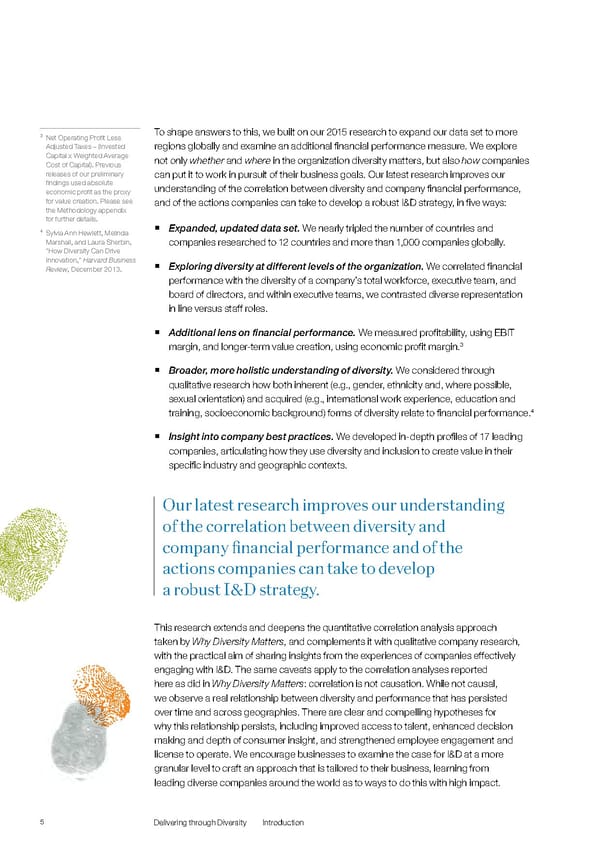3 Net Operating Profit Less To shape answers to this, we built on our 2015 research to expand our data set to more Adjusted Taxes – (Invested regions globally and examine an additional financial performance measure. We explore Capital x Weighted Average not only whether and where in the organization diversity matters, but also how companies Cost of Capital). Previous releases of our preliminary can put it to work in pursuit of their business goals. Our latest research improves our findings used absolute understanding of the correlation between diversity and company financial performance, economic profit as the proxy for value creation. Please see and of the actions companies can take to develop a robust I&D strategy, in five ways: the Methodology appendix for further details. 4 ƒ Expanded, updated data set. We nearly tripled the number of countries and Sylvia Ann Hewlett, Melinda Marshall, and Laura Sherbin, companies researched to 12 countries and more than 1,000 companies globally. “How Diversity Can Drive Innovation,” Harvard Business ƒ Exploring diversity at different levels of the organization. We correlated financial Review, December 2013. performance with the diversity of a company’s total workforce, executive team, and board of directors, and within executive teams, we contrasted diverse representation in line versus staff roles. ƒ Additional lens on financial performance. We measured profitability, using EBIT 3 margin, and longer-term value creation, using economic profit margin. ƒ Broader, more holistic understanding of diversity. We considered through qualitative research how both inherent (e.g., gender, ethnicity and, where possible, sexual orientation) and acquired (e.g., international work experience, education and 4 training, socioeconomic background) forms of diversity relate to financial performance. ƒ Insight into company best practices. We developed in-depth profiles of 17 leading companies, articulating how they use diversity and inclusion to create value in their specific industry and geographic contexts. Our latest research improves our understanding of the correlation between diversity and company financial performance and of the actions companies can take to develop a robust I&D strategy. This research extends and deepens the quantitative correlation analysis approach taken by Why Diversity Matters, and complements it with qualitative company research, with the practical aim of sharing insights from the experiences of companies effectively engaging with I&D. The same caveats apply to the correlation analyses reported here as did in Why Diversity Matters: correlation is not causation. While not causal, we observe a real relationship between diversity and performance that has persisted over time and across geographies. There are clear and compelling hypotheses for why this relationship persists, including improved access to talent, enhanced decision making and depth of consumer insight, and strengthened employee engagement and license to operate. We encourage businesses to examine the case for I&D at a more granular level to craft an approach that is tailored to their business, learning from leading diverse companies around the world as to ways to do this with high impact. 5 Delivering through Diversity Introduction
 Delivering Through Diversity Page 6 Page 8
Delivering Through Diversity Page 6 Page 8